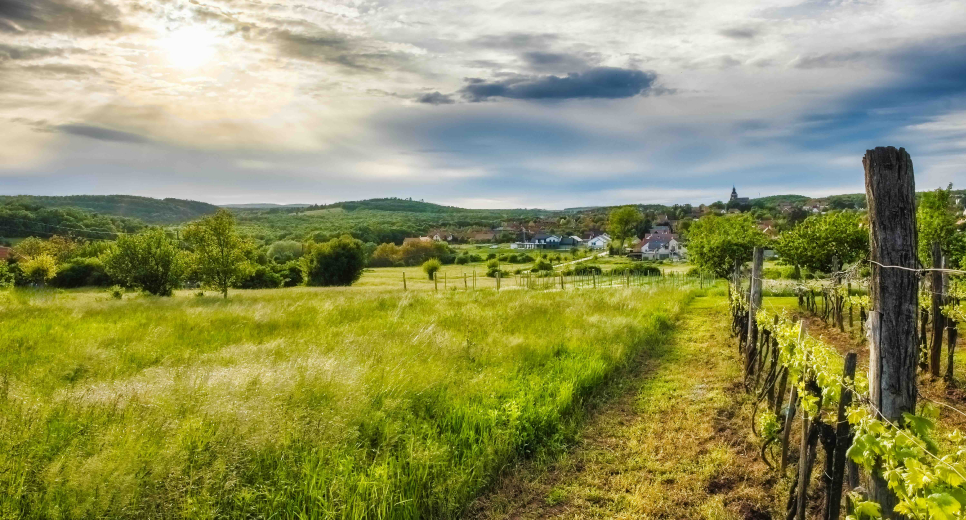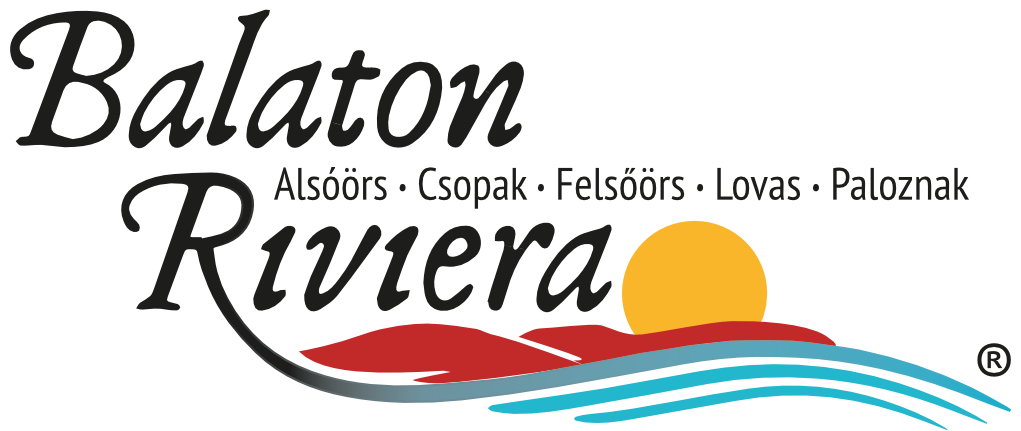
Felsőörs

CHILDREN, RED STONE AND BABBLING BROOKS.
The true face of today's Felsőörs can be seen when approaching from Lake Balaton. The three kilometres from Alsóörs along the Roman road are a pleasant hike by bike or on foot, and used to be a twice-daily trip for the children in the camp down to the beach in Alsóörs and back, singing and picking at crisp cherries. The dynamically developing former royal land rising above the road opens up before us with a serene spaciousness. According to medieval documents, it included today's Alsóörs and Lovas under the name of Örs, but they were administratively separated as early as the 13th century, but in essence they have always been closely linked. The small settlements of the Balaton Riviera are related to each other, yet each of them is different, hiding something special, a secret, an experience, something to be discovered.
We pass through gentle countryside, past velvety green fields and vineyards, with riding schools in the valley to our right, and the inspiring sight of Lake Balaton in the distance. To the left, on the Kishegy, a row of cottages and wine-press houses embedded in nature. Above the Malom valley, in the part of Felsőörs facing Lake Balaton, new streets are being built at a rapid pace, with terraced family houses and Mediterranean gardens. Families with young children are moving here from Veszprém and other towns, and the population has exceeded 1,800, which in itself is an indication that the settlement is experiencing an exceptionally favourable moment. Not only because of the young people and the Snétberger Music Centre is the vibe here fascinating, but also because of the many exciting personalities who live here. Film director and screenwriter Can Togay, who was the artistic director of the Veszprém-Balaton European Capital of Culture 2023 project, Pál Vikman, founder of the Orlando singing group, lutenist Csaba Nagy, founder of the Early Music Workshop, and psychologist and brain researcher Csaba Pléh, for example, has his holiday home here, but the list goes on and on, including university teachers, sportsmen and other creative people.
On the way up the village's Fő Street, don't miss the recently opened confectionery, especially as it's a relatively long walk to the pride of Felsőörs, the medieval preposterous church built of red sandstone, a local feature. It's a heartbreaking sight to see the local pub, the Viola, a meeting place for ordinary people and weary tourists, almost at one with the House of God. I always find myself in the mood for Umberto Eco's world-famous mystery book The Name of the Rose, especially when I extend my imagination to the Preposterous mansion on the opposite. It is a small medieval corner, which, incidentally, does not form a unity with the village in the same way that, for example, the Reformed Church does with the Old Village. More isolated is this 12th-century church, in the Romanesque Árpád style, with carvings on its tower, such as the Hercules knots protecting against demons, which are not found elsewhere. You can almost hear the music of the stones in the rhythmic arches, looking out of the windows that open to the sky, like the chanting of Bach's Passions and the Dantean hymns of Hell. A stone museum embodying the soul of the people - one might say of the church, but the term is used to describe the geological trail in Felsőörs, accessible from the last street on the way to Veszprém.
There is another trail in the village, the Malom Völgyi (Mill Valley). It was built with the help of civilians. The valley is reached by bypassing the Miske hill and descending a long flight of steps in Fenyves Street.
The former quarry on the slope of the Forrás Hill is an internationally important site of geological and paleontological interest. The geological display area here contains fossilized remains of the Triassic Sea sediments and the Earth's volcanic activity, dating back hundreds of millions of years.
If you are not so much interested in the stones as in the trees and streams, you can get to the Malom Valley by following the green sign from the redstone church. Otherwise, the best way back to Alsóörs is also for those who detour to the geological showplace, the Malom Valley, a protected natural area linking Felsőörs and Lovas. There is a pleasant walk along the banks of the stream, but you can also ride a mountain bike, but expect to stop frequently at the small signs indicating the unique natural attractions of Felsőörs, which is unique in Hungary. Information about the flora and fauna of the area is available in English and Hungarian. Mountain and water. A green shimmering mirror of water shines through the trees of the forest. The smell of moss and wet earth. Everything smells fresh and cool. And then we hear the booming of several springs rising up here. The water from these springs feeds the Malom stream in Felsőörs, which over the centuries has carved a valley into the rock and created a special, cool microclimate. Just a few metres below the springs, dissolved lime begins to precipitate out of the water. This lime corrodes tree branches that fall into the riverbed and creates unique geological formations, calcareous tufa dams. The dams form steps in several places, and the sound of falling water makes the valley lively. Heading towards Lovas, after a few hundred metres, the stream meets its western branch, the Lovasi-Séd, along which we can turn back to the source of the King's Well. The small bridge you cross is spider-webbed, a breathless feast for nature. At the entrance to the valley, the steep hillside hides several small caves. Caves are rare in the Balaton highlands, but here three have formed close to each other. Two kilometres from here is the spring, where you can rest, bake bacon, and there are fireplaces, tables and benches for hikers.
At the end of the Mill Valley, we see cows grazing peacefully, fenced in with electric fences. We arrive at a strange, enchanted house, which must have been the water mill of yesteryear, whose creative, friendly inhabitants today make the visitor curious with their high stands built into the canopy of trees, children's toys, sculptures, duvets that ventilate in the windows and feather cushions. In Lovas we continue our way through small white farmhouses to the church, from there we walk down to the shore of Lake Balaton, to Alsóörs, and thus complete the circle, the beautiful all-day walk, during which we seem to have been in a dream-like landscape of silence and tranquillity, or even in a medieval fairy-tale play.
USEFUL INFORMATIONS
Mayor's office
Address: Szabadság tér 2.
Phone: +36 87 577 211
Email: onkormanyzat@felsoors.hu
Web: www.felsoors.hu
Pharmacy
Address: Szabadság tér 2.
Phone: +36 87 477 120
GP (general practitioner)
Address: Rózsa utca 1.
Phone: +36 87 447 120
Library
Address: in the building of the mayor's office
Phone: +36 70 320 68 54
Post office
Address: Szabadság tér 2.
Phone: +36 87 477 018
Reformed Pastoral Office
Address: Kisnemesi kúria, Szabadság tér 10.
Roman Catholic Parish Office
Address: (former Prepost Mansion) Batthyányi tér 3.
Phone: +36 87 477 013
Emergency call
Ambulance: 104
Police: 107
Tow truck: 188
Fire Department: 105
Adress: Balatonfüred, Levendula utca 2.
Phone: +36 87 580 119
Hospital
Hospital Balatonfüred: Gyógy tér 1.
Phone: +36 87 584 584
Veszprém County Hospital: Veszprém, Kórház utca 1.
Phone: +36 88 420 210 or +36 88 420 211
Water Police
Balatonfüred: +36 87 352 680
Siófok: +36 84 310 712
Vet
Dr. Payr Egon
Address: Balatonfüred, Galamb utca 13.
Phone: +36 87 341 879 or +36 30 9942 690
Monday-Friday: 18-19:30
Veterinary pharmacy
Address: Balatonfüred, Köztársaság utca 10.
Phone: +36 30 9942 690
Monday, Saturday: 9-10 AM
